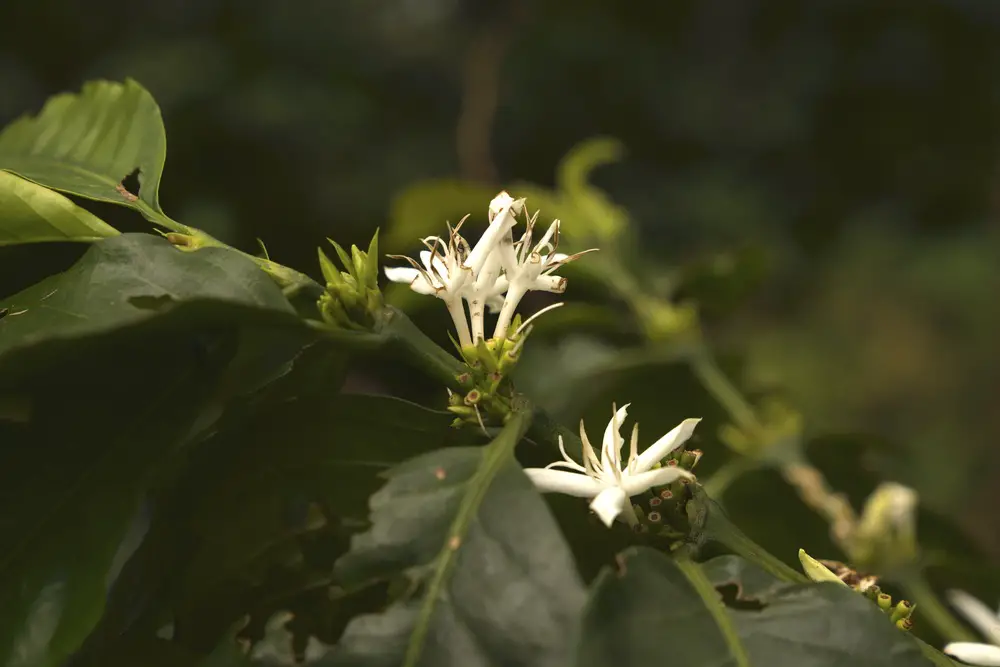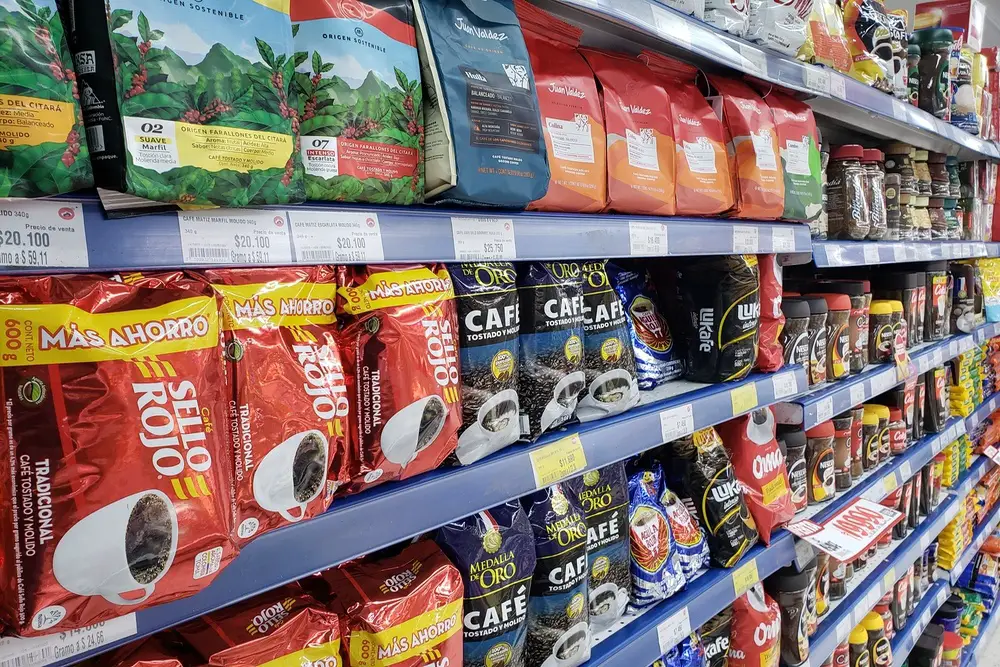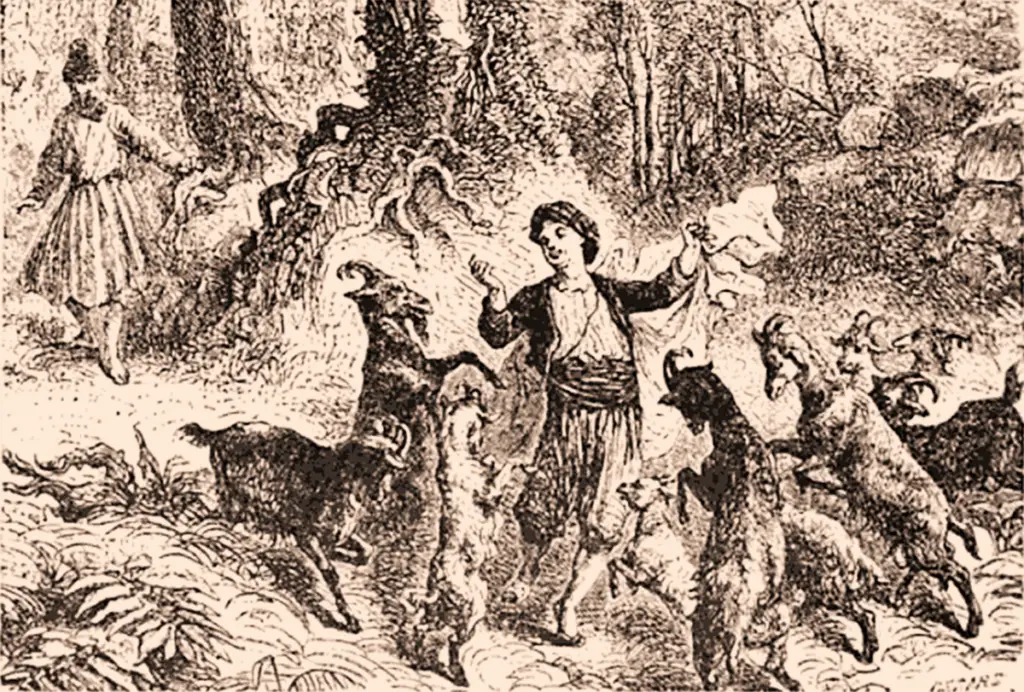Did you know that India is the sixth largest coffee producer in the world?
Table of Contents
The History of Indian Coffee
In the mid-17th century, Baba Budan, a religious man from India (considered a saint in his country), is said to have been on a pilgrimage to Mecca in Saudi Arabia.
On the way back home, he is said to have been offered a very dark, sweet-tasting liquid to drink. This liquid was called “qahwa” (“coffee” in Arabic) by the locals.
This is how the traveler understood it when this drink was served to other guests as well as himself while staying in the port of Mocha, a port city in Yemen.
Budan was delighted with the taste of the drink because he was fascinated by its taste and refreshing effect.
Baba Budan’s cunning
The Hindu traveler quickly realized how much the Yemenis, and in general all Arabs, appreciated the drink.
In fact, he found that the Arabs knew the potential of this product and therefore, although they already traded coffee, they only exported it roasted or baked so that nobody could grow it themselves.
It was therefore considered illegal to take green (unroasted) coffee seeds from the Arab world, and the penalty for this crime was death.
So, Baba Budan came up with a plan to take some green beans back to India.
He only took 7 green coffee seeds and hid them in his long beard so they wouldn’t be confiscated on the way back.
Since the number 7 is a sacred number in the Islamic religion, Budan’s act was considered a religious act.
This is how the first coffee seeds came to India.
Later, the saint planted the seeds in the courtyard of his home in the city of Chikmagalur, and this place became the birthplace of Indian coffee.
The origin of Indian coffee
Sometime later, the first coffee plantations (coffee trees) were planted on the hills surrounding the city.
Not surprisingly, the coffee has been a hit with the local population.
In gratitude for the saint’s work, the city’s residents named the entire mountain range Baba Budan Giri, or “The Hill of Baba Bunda”.
So, India started its production with the Arabica variant, which originated in Yemen.
the Robusta variety is the most commonly grown in the country due to its greater resilience to pests and climate.
The 18th Century and the Arrival of the East India Company
The arrival of the British in India marked the beginning of mass production of coffee on the subcontinent.
British entrepreneurs took coffee growing seriously and turned the forests of southern India into commercial coffee plantations.
In fact, coffee was grown in India long before tea.
The 19th and 20th centuries
By the end of the 19th century, coffee cultivation was well established in India, so much so that there was already an export lineage to Europe.
In the 20th century, coffee of Indian origin was well known in the “Old Continent”, although tea production was of course also very popular.
However, World War II and the disappearance of the European market led to a sharp decline in Indian coffee production.
The profile of a good Indian coffee
Typically, Indian coffee is described as a medium-bodied, medium-acidic beverage accompanied by various notes and aromas.
A good Indian coffee has similar properties to Indonesian coffee, especially that from the island of Java.
Some also claim that some Indian coffees are very similar to Guatemalan coffee.
On the other hand, spicy aromas reminiscent of spices are often found in Indian coffee, e.g.:
- Cardamom
- Cloves
- Pepper
- Nutmeg
Indian coffee cultivation
99% of all Indian coffee production comes from small farms of less than 10 hectares.
In addition, most of the coffee is produced in the traditional growing areas in the south of the country.
The coffee-growing region consists mainly of the following states:
- Karnataka (whose capital is Chikmagalur)
- Kerala
- Tamilnadu _
- Andhra Pradesh
- Odisha
The 5 coffee growing states of India
As previously mentioned, most of the Indian coffee comes from the southern states of the country.
Now let’s look at each state’s share of coffee.
State of Odisha
Odisha is the fifth largest coffee-growing state in India.
Therefore, Arabica coffee makes up the majority of the crop in this state.
The coffee from this region needs moderate temperatures and high rainfall to grow.
Estimated total annual production
550 metric tons.
State of Andhra Pradesh
In fourth place is the state of Andhra Pradesh, a department that grows both Arabica and Robusta coffee.
Most of the production, however, is Arabica.
Estimated total annual production
7,425 metric tons.
State of Tamil Nadu
The state of Tamil Nadu is a major coffee producer, accounting for over 5% of the national total.
Arabica coffee accounts for most of the state’s production. But Robusta coffee is also produced in this state.
Estimated total annual production
17,875 metric tons.
State of Kerala
Kerala is the second largest coffee producer in all of India, accounting for more than 20% of the country’s total production.
Unlike the three states already mentioned, however, Kerala produces more than 90% of Robusta coffee at just over 65,000 tons per year.
Arabica coffee, on the other hand, accounts for only around 2,055 tons per year.
In addition, the coffee in Kerala is grown at an altitude of around 1,200 m above sea level.
Estimated total annual production
67,700 metric tons.
State of Karnataka
Karnataka is India’s largest coffee producer, producing over 70% of the country’s total coffee production.
Here, too, production is based almost exclusively on the cultivation of Robusta coffee, but Arabica coffee is also grown.
The state dedicates a large area to coffee cultivation. Karnataka accounts for more than 60% of the total coffee-growing area.
In addition, coffee in Karnataka is typically grown at altitudes of 1,300 meters above sea level. or higher grown.
The reason why so much coffee is grown in Karnataka is because of the climate, as both the temperature and rainfall are ideal for the growth of this crop.
Estimated total annual production
233,230 metric tons.
Why is so much Robusta coffee produced?
In general, Robusta coffee is considered inferior to Arabica coffee.
However, since the 1950s, the Indian coffee trade has declined significantly as other players such as Indonesia, Vietnam and Colombia have been better able to meet global demand for Arabica coffee.
As a result, there were no longer any markets for Indian Arabica where it could be traded profitably.
Robusta coffee, commonly used for instant coffee, has always been in high demand.
In addition, this coffee is cheaper and easier to produce, especially since it is much more resistant to the intense Indian heat and also to pests.
Therefore, the Indian coffee industry chose the Robusta coffee.
Peculiarities of cultivation
Coffee cultivation in India usually takes place in the shade of trees that are larger than the coffee tree.
In this way, the coffee trees are protected from the harsh Indian heat.
In addition, the coffee plantations are planted with other crops, such as:
- Banana
- Paprika
- Cardamom
- Vanilla
- Orange
is the best shade-grown coffee in the world.
Also, most Arabica farms are between 700 and 1,200 masl, making it easier for the coffee to be exposed to monsoon rain conditions.
For this reason, Indian coffee is known among connoisseurs as “monsoon coffee”.
It should be noted that 70% of Indian coffee production consists of Robusta coffee and only 30% Arabica coffee.
Coffee is exposed to the monsoon
Due to the typical climatic conditions in southern India, it is common for there to be a monsoon or stormy season in the region.
This phenomenon is well known to coffee farmers and they use these conditions to their advantage.
During the monsoon season, the coffee farmers store the coffee beans in large covered silos or in open warehouses.
The coffee is then exposed to the moisture-rich winds.
In this way, the beans can remain in the humidity for up to 3 years, resulting in an increase in the sweetness of the coffee.
The beans are then dried in the sun.
Because of this, Indian coffee has an intense flavor with woody notes, a loamy texture and, most importantly, lower acidity.
On the other hand, when the beans have been exposed to the monsoon climate, their color changes from green to a light yellow-brown.
The higher body and lower acidity make monsoon coffee a very good choice for adding depth to espresso blends.
Indian coffee varieties
Due to the Indian climate and farming methods there are more than 16 varieties of Indian coffee that are unique to India; we will now look at the most representative.
Kents
This variant is a mutation of the Typica variety and has been widely cultivated by Indian growers since the 1920’s.
It was also the first variety native to India and is named after LP Kent, a British grower who was the first to select the plant.
For many years the Kents coffee bean was known for its high quality and was widely grown as it was valued for its high rust resistance.
After the 1940s, however, consumption declined and cultivation is now limited to a few regions.
P.795
Introduced in the 1940s, this coffee bean is the most successful of all Indian Arabica coffees.
It was developed from the Kents coffee to get a better yield on the plantations.
This coffee is characterized by its intense aroma, its excellent quality and, above all, its resistance to rust (a disease caused by a fungus that throughout history has devastated entire plantations).
According to experts, this strain produces a well-balanced cup of coffee with subtle mocha notes.
Cauvery
This coffee is a cross between the Caturra and Timor varieties, which is why it is also called Catimor.
Cauvery coffee has the high yield and quality of Caturra and the strength of Timor.
Sln.9
This coffee variety is a cross between Tafarikela and Timor and thus has all the exceptional properties of Tafarikela and the characteristic resilience of Timor.
This strain is one of the most recognized and awarded strains in the country.
P.274
the most widespread in the main growing areas for Robusta coffee.
She is also a hybrid selected from various high yielding Robusta strains from Sri Lanka.
The coffee plants they produce are particularly hardy and adapted to the heat and humidity of the country’s main growing areas.
The taste of these beans, in turn, is described as strong and intense, with strong spicy notes.
CxR
The CxR coffee is another Robusta variant, resulting from the cross between Coffea congénitis and ordinary Robusta coffee.
Therefore, the bushes of this variety are more compact than traditional coffee trees.
CxR beans are known for their unusual flavor that makes them unique in the world.
Coffee culture in India
Contrary to popular belief, Hindus love coffee as much as they love tea.
They prefer to prepare it with milk and sugar, although many also drink it with all sorts of spices.
In addition, coffee is now drunk by people of all ages and social classes in the country.
Coffee consumption in the Asian country is increasing every year. However, coffee is drunk differently in each region: some like it cold, others like it black, with milk or honey, etc.
However, for most people, making the coffee at home and by hand is the most important thing, as few people can afford coffee makers or espresso machines.
coffeeshops are opening more frequently, especially in the big cities, as big brands take advantage of the country’s growing middle class.
This means that for some people, visiting a coffee shop is more an opportunity to show off their high spending power than to show a genuine interest in coffee; a situation very similar to that in China.
Nevertheless, both coffee growers and real coffee lovers are trying to increase the consumption of coffee specialties among the population.
However, there is still a long way to go if we are to change a centuries-old tradition of drinking good, home-brewed coffee.



